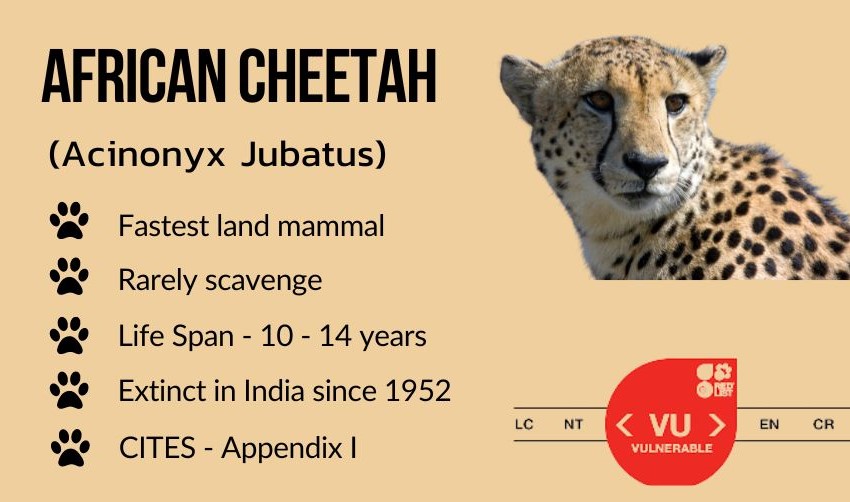To know about, Part-1, click here
1. Cheetah Reintroduction in India

2. Ramsar Sites
|
List of 10 new wetlands of India added to the Ramsar Sites list |
|
|
Koonthankulam Bird Sanctuary |
Tamil Nadu |
|
Gulf of Mannar Biosphere Reserve |
|
|
Vembannur Wetland Complex |
|
|
Vellode Bird Sanctuary |
|
|
Vedanthangal Bird Sanctuary |
|
|
Udhayamarthandapuram Bird Sanctuary |
|
|
Nanda Lake |
Goa |
|
Ranganathittu Bird Sanctuary |
Karnataka |
|
Sirpur Wetland |
Madhya Pradesh |
|
Satkosia Gorge |
Odisha |
|
Government Initiatives for Wetland Conservation |
|
3. Ban on identified Single Use Plastics
Bangladesh became the first country to ban thin plastic bags in 2002.
4. TX2 International Award
Reference
PIB | Year End Review: Ministry of Environment Forest and Climate Change
chirak 3 years
thank you shankar ias academy

IAS Parliament 3 years
Thank you. The compilation is available in the following link: https://www.iasparliament.com/download-file/1330. Keep following.